In 1964 Yamaha had made its mark by becoming the first manufacturer to win a World Championship with a two-stroke engine. An impressive feat considering that the company had only been making motorcycles for nine years at the time.
Yamaha 2-Strokes – Motorsport
Six years after that first World Championship win with its factory team racers in 1964, Yamaha posted another milestone marker as its TD2 250cc twin became the first production racer to take a rider to a world title win. Rod Gould may have had a semi-works contract with Yamaha European importers that helped him on the way to the title but the TD2 which took him to victory was still a model that was available to any other Championship-chasing rider via any Yamaha dealer anywhere in the world.
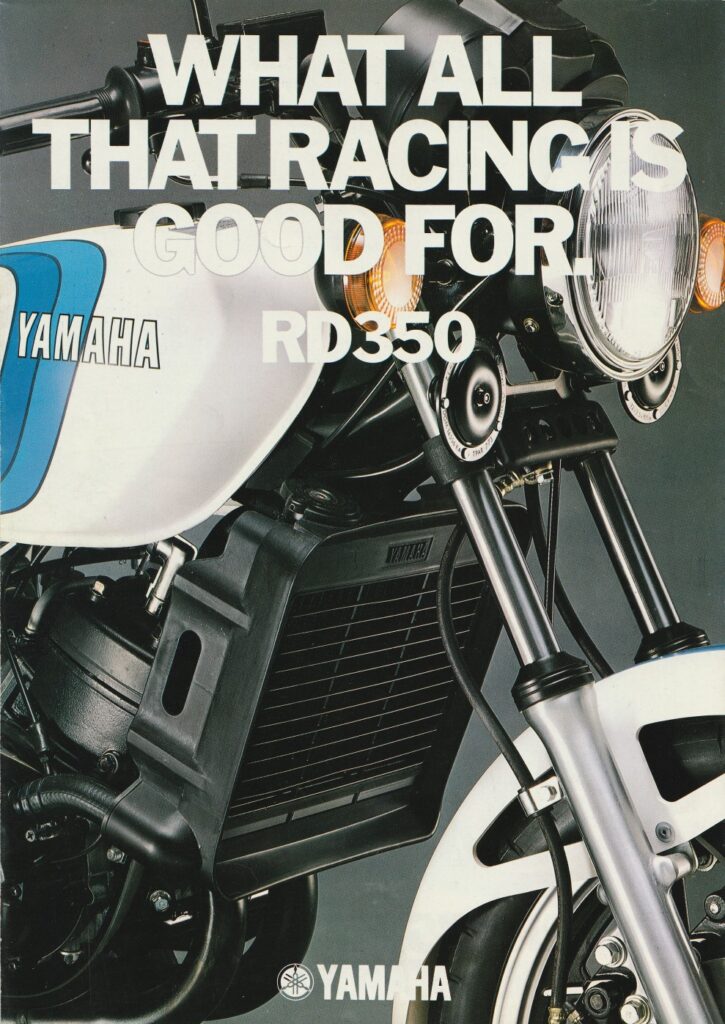
Yamaha were never shy about drawing a link between their road bikes and racing machines, as this RD350 advert shows.
In fact, Rod’s closest rivals in 1970 were Kel Carruthers and Phil Read, both of whom were mounted on their own ‘bought and paid for’ TD2 racers over which Rod’s bike had no performance advantage. He snatched the win at Monza to clinch his right to wear the crown by making a daring slipstreaming move out of the final high-speed corner that launched him from third to first, ahead of Carruthers and Read. So identical was the performance of the three bikes that they crossed the finishing line with less than a second between them.
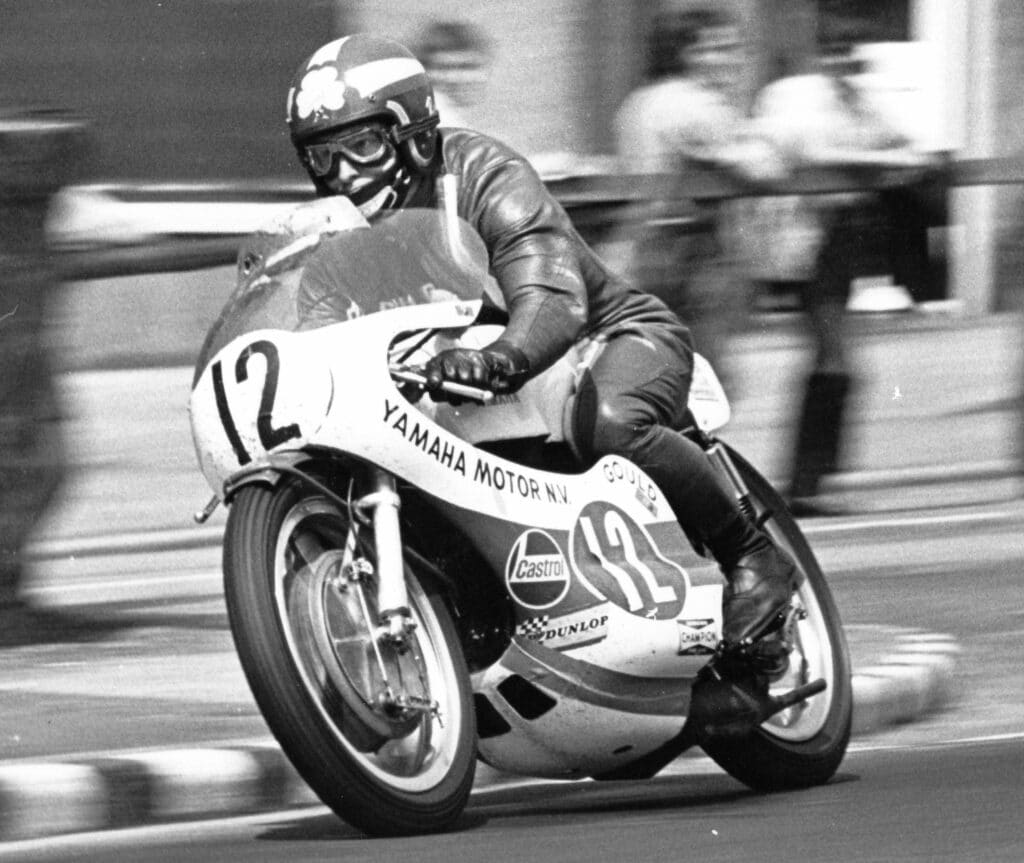
Rod Gould on the Yamaha TD2 at speed down Bray Hill in the 1970 Isle of Man TT
Evidence of the fact that the Yamaha TD2 truly gave privateer riders a genuine chance of a Championship can also be confirmed by a look at the final standings in the 250cc class for 1970. The first seven riders (and nine of those in the top ten) were TD2-mounted. Rod Gould won six of the twelve Grand Prix races that year and Kent Andersson won another – both with assistance from Yamaha European importers. But four Grand Prix victories also went to Kel Carruthers riding a TD2 that he had purchased with his own hard-earned dollars from a California Yamaha dealer.
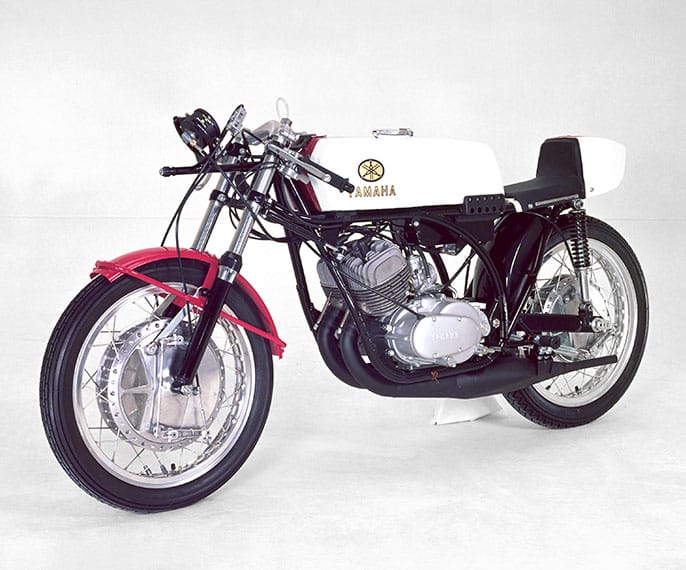
Yamaha TD2
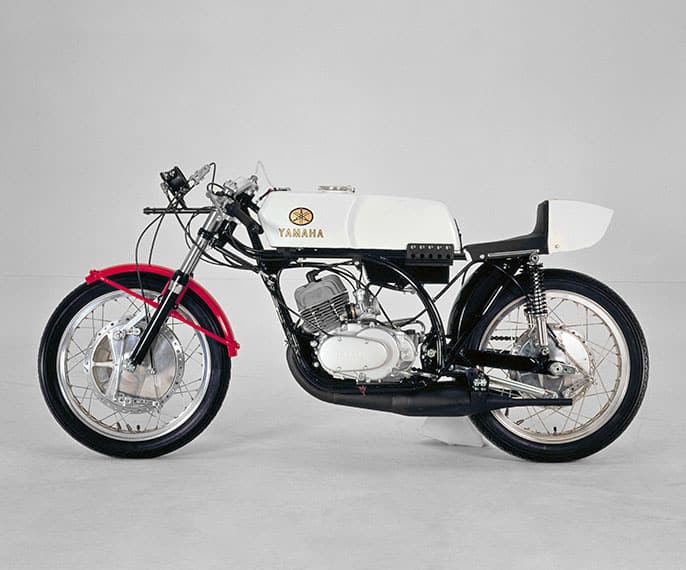
The 250cc TD2 and its 350cc TR2 counterpart were the ultimate expression of Yamaha’s development of production bikes into racers, with a lineage that could be traced right back to the company’s YDS range of the road bikes of 1959 and 1960.
The following year provided 100% proof that a privateer rider could visit his local Yamaha dealer and write a cheque to purchase a motorcycle that would take him to the World Championship. For that is exactly what Phil Read did…!
He and Rod Gould, battled fiercely throughout the 1971 season, which ended him taking Rod’s crown by a narrow margin. Phil won three of the Grand Prix races, with Rod taking two – but equally as significant as Phil’s privateer win was the fact that four other independent riders took GP wins with their TD2 twins.
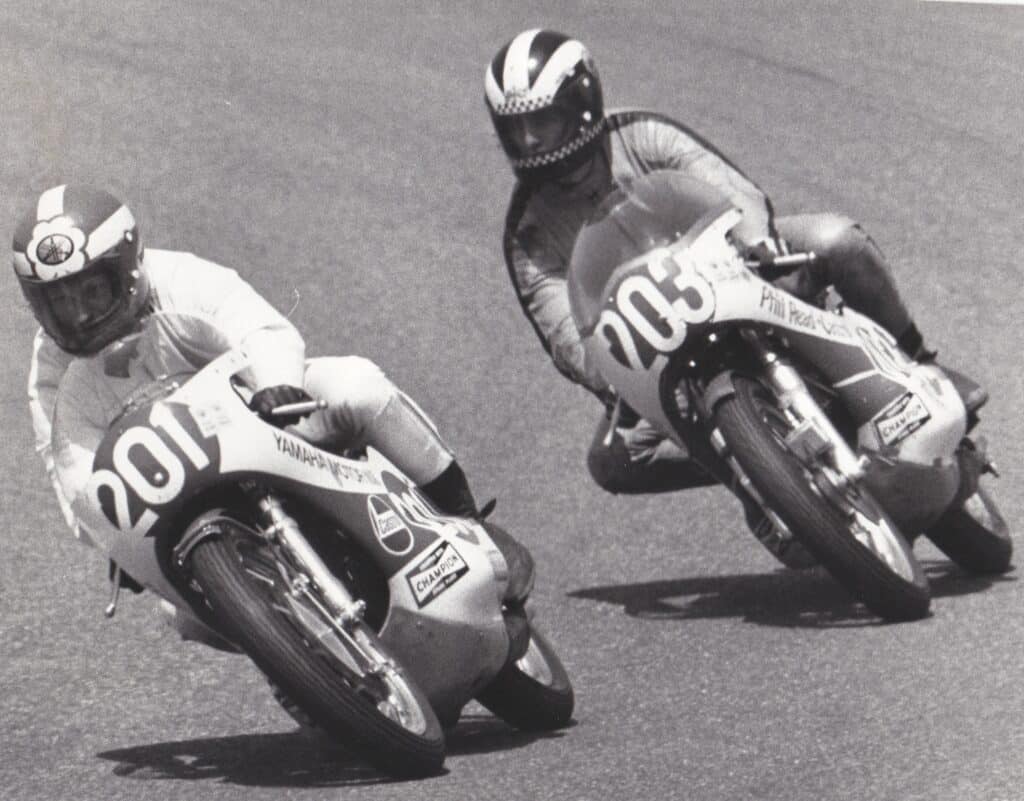
Yamaha 2-Strokes in Motorsport: Phil Read hunts down Rod Gould in one of the 1971 season battles for the world title. In the end Read snatched Gould’s crown by a narrow margin.
The 1972 season saw Jarno Saarinen join in the hard-fought Championship battle and take the title ahead of Phil Read with Rod Gould a close third. As the new rising star in Grand Prix firmament, Jarno was signed by Yamaha to pilot its new four-cylinder 500cc racer for 1973 and success came immediately when he scored its debut win in the French Grand Prix then followed that with another GP victory in Austria.
Prior to the start of the Grand Prix season, Saarinen had also reminded the world of the worth of Yamaha’s TD-series production racer technology by riding 350cc TR3 to victory in the world’s two most important Formula 750 races – the Daytona 200 in the USA and the Imola 200 in Italy. In both races the Yamaha twin had bested the opposition from Suzuki and Kawasaki with their three-cylinder 750cc racers with more than twice the engine capacity of Yamaha’s little twin.
Tragically, however, the dream start to the year was cruelly cut short after only three races in the World Championship season when Jarno was killed in a multiple-bike crash in the 250cc Italian GP at Monza.
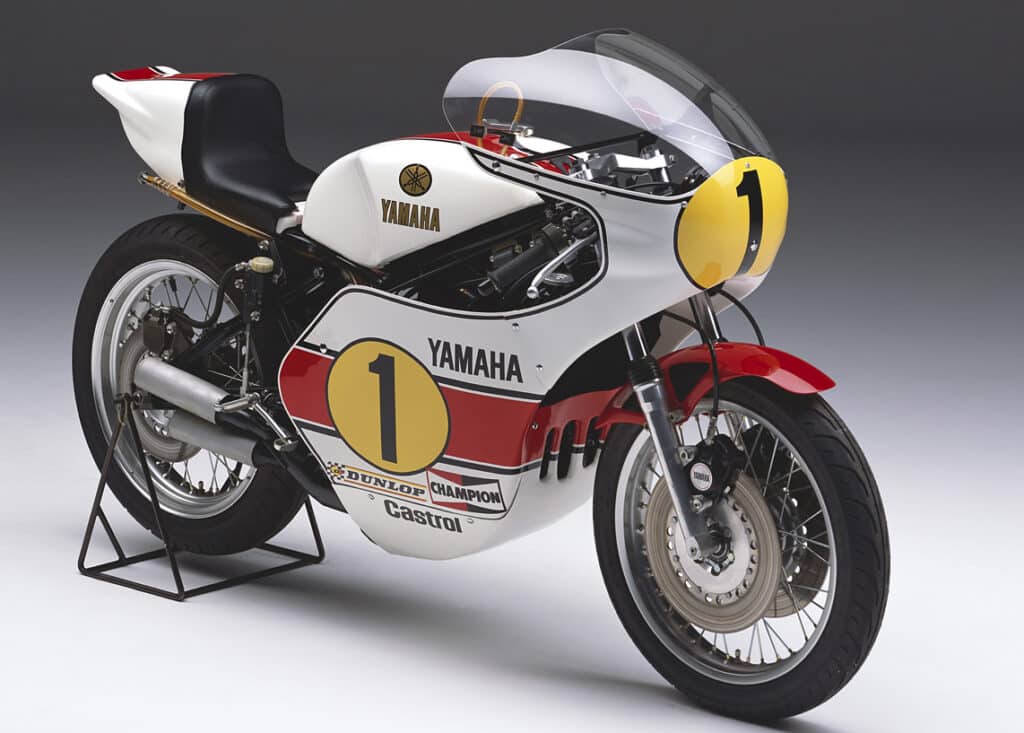
As the decade went on, the value of Yamaha’s production racers to the general world of motorcycling was proved over and over again. The engine of the YZR four-cylinder 500cc GP racer was, to all intents and purposes, two TD2 twins linked in line and a similar linking of two TR2 350cc engines was what created the 90bhp TZ750.
New Yamaha team signing Giacomo Agostini won its debut race in the 1974 Daytona 200 and the bike’s continuing developments over the next five years saw it totally dominate the Formula 750 class for the next five years. Like the TD and TR series before it, the TZ750 was made available to private riders and they played a significant role in its success. Whether in the hands of factory team riders or privateers, the TZ750 was unbeatable and the Formula 750 World Championship became essentially a ‘one make series’ for Yamaha’s benefit- which led to the class being abandoned at the send of the 1978 season.
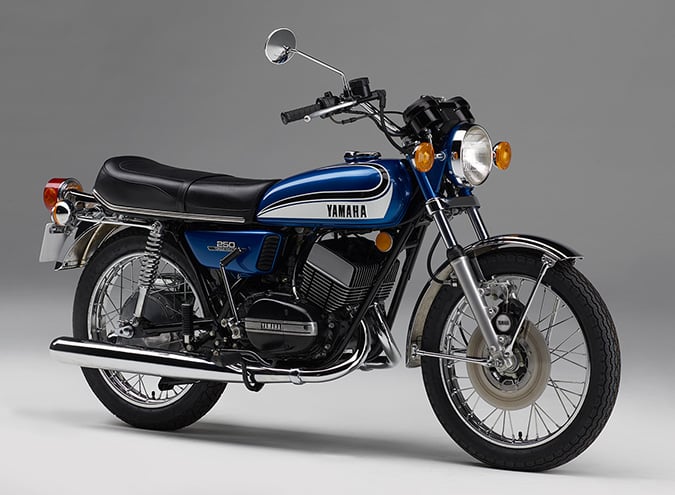
Yamaha 2-Strokes – 1973 Yamaha RD250, the air-cooled-2-stroke engine produced 29bhp@7,500rpm
The “Race Developed” Yamaha RD series of air-cooled twins had obvious visible connections to the TD racers. The RD range was introduced in 1970 and for the next ten years was available in 250, 350 and 400cc engine capacities.
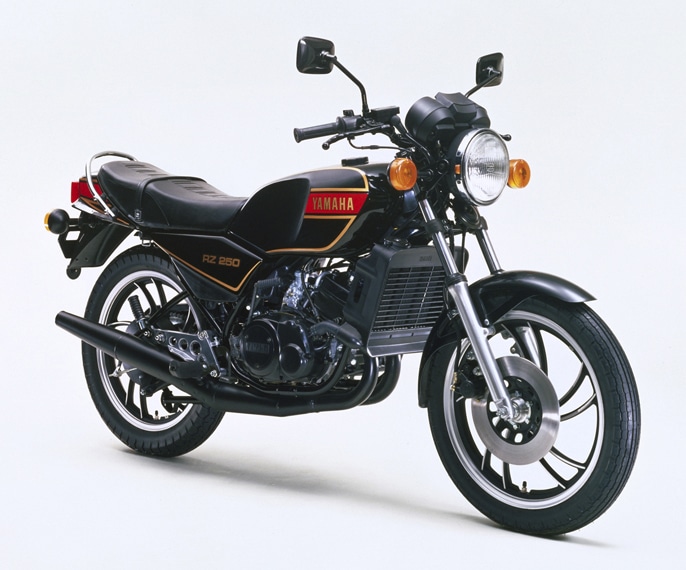
The RD250LC, for liquid cooled, was known as the RZ250 in Japan as the image above shows. The updated liquid cooled 2-stroke produced 34bhp@8,000rpm
As well as their effect on racing classes from 250cc to 750cc, the TD-series twins also had a major influence on motorcycling in general during the 1980s as they provided the design platform for two of the most popular, most successful and best-loved road bikes of that decade – Yamaha’s RD250LC and RD350LC twins.
Key to their success was their liquid-cooling system that was directly derived from that first seen on the Yamaha TD3 production racers towards the end of the 1972 season… thus proving, as is so often claimed, that racing definitely does improve the breed.
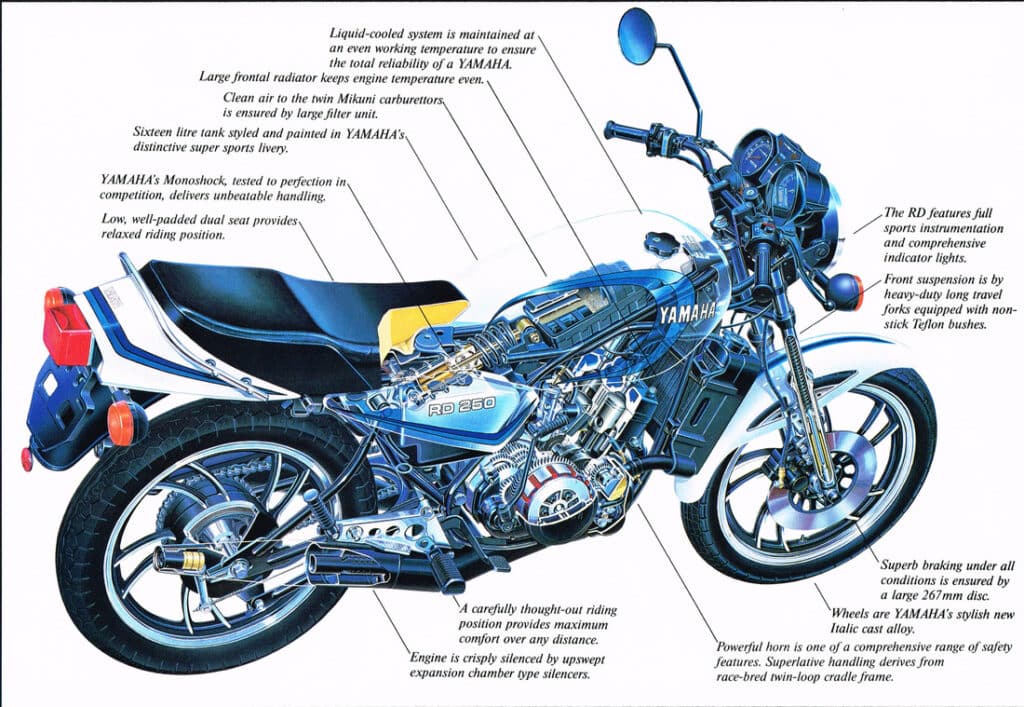
Yamaha 2-Strokes – A cut-away drawing from the 1981 Yamaha RD250LC brochure showing the liquid cooling in detail.
Click here to read Part 1.
Words: Bruce Cox
Photographs: The Motorcycle Files and Yamaha Global Image Library



